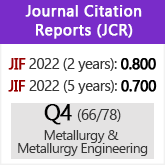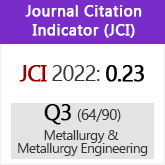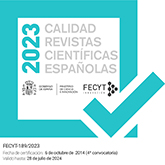Preparation of thixotropic materials by "compocasting"
DOI:
https://doi.org/10.3989/revmetalm.2005.v41.iExtra.1008Keywords:
Thixotropy, Intermetallic compound, Eutectic alloys, Particle-reinforced alloysAbstract
The thixotropic behavior of a material is associated to the coexistence of a liquid and a solid phase in suitable proportions so that the mixture does not crumble. In these conditions, the slurry is relatively insensible to shear stresses, being able to deform itself very easily. In this work, a thixotropic material formed by an alloy 63%Sn-37%Pb (which acts as the union agent or liquid phase), and a determined percentage of copper particles (which act as the solid phase) will be elaborated. This mixture is made by means of mechanical agitation at 250° C when the Sn-Pb alloy is in the liquid state. The work includes the preparation of slurries with different percentages of Cu in the interval from 10 to 50% in weight (the Cu particles being both spherical and irregular morphology). The material obtained was characterized by optical and Scanning Electron Microscope.
Downloads
Download data is not yet available.
Downloads
Published
2005-12-17
How to Cite
Alcántara, S., Merizalde, C., Cabrera, J. M., & Prado, J. M. (2005). Preparation of thixotropic materials by "compocasting". Revista De Metalurgia, 41(Extra), 111–115. https://doi.org/10.3989/revmetalm.2005.v41.iExtra.1008
Issue
Section
Articles
License
Copyright (c) 2005 Consejo Superior de Investigaciones Científicas (CSIC)

This work is licensed under a Creative Commons Attribution 4.0 International License.
© CSIC. Manuscripts published in both the printed and online versions of this Journal are the property of Consejo Superior de Investigaciones Científicas, and quoting this source is a requirement for any partial or full reproduction.All contents of this electronic edition, except where otherwise noted, are distributed under a “Creative Commons Attribution 4.0 International” (CC BY 4.0) License. You may read here the basic information and the legal text of the license. The indication of the CC BY 4.0 License must be expressly stated in this way when necessary.
Self-archiving in repositories, personal webpages or similar, of any version other than the published by the Editor, is not allowed.

















